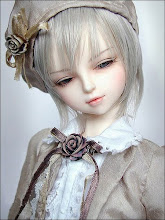
Kolkata, formerly spelled Calcutta, is the capital of the Indian state of West Bengal. It is located in eastern India on the east bank of the River Hooghly. The city is a colonial city developed by the British East India Company and then the British Empire. The city was the capital of the British Indian empire till 1911 when the capital was relocated to Delhi. Kolkata witnessed a fast rise as the second city of the British Empire in the 19th century accompanied by the development of a culture that was a coalescence of European philosophy with Indian tradition. The city is also noted for its revolutionary history, ranging from Indian struggle for independence to the leftist Naxalite and trade union movements. Labelled the "Cultural Capital of India", "The City of Processions", "The City of Palaces", and the "City of Joy", Kolkata has also been home to luminaries such as Rabindranath Tagore, Subhash Chandra Bose, Mother Teresa and Satyajit Ray. Problems related to rapid urbanisation started to plague the city from 1930s and still the city is an example of an urban hotbed of the developing nations.
Name and origins
The rent-roll of Akbar, the 16th century Mughal emperor, and the work of a Bengali poet, Bipradas Pipilai, of the late 15th century, both make mention of the city's early name being Kolikata, from which Kolkata/Calcutta are said to derive
There is much discussion about the origin of the city's name. The most accepted view is that it comes from the Hindu goddess Kali and the original name was Kalikshetra, "the place of Kali".
Other theories include:
* The name comes from the location of the original settlement beside a khal ("canal" in Bengali)
* The place was known for the manufacture of shell-lime, the name deriving from kali ""lime") and kata ("burnt shell")
* The name is derived from the Bengali kilkila ("flat area"), which is mentioned in the old literature.
The area where the city is now located was originally inhabited by the people of three villages: Kalikata, Sutanuti and Gobindapur. However, the boundaries of the three villages gradually became less distinct, and before the battle of Plassey, the city could be divided into four different sub-areas: European Kolkata (Dihi Kolkata); a residential village with some sacred spots (Gobindapur); a traditional Indian market (Bazar Kalikata or Burrabazar); and a riverine mart concentrating on cloth trade (Sutanati). After the battle of Plassey in 1757, the British started rebuilding the city with the idea of making it the capital for their empire.
The Calcutta High Court ruled in 2003 that Job Charnock, the Englishman generally believed to be the founder of the Calcutta, is not the founder of the city and that hence Kolkata has no birthday. According to the Court, the city has its genesis in the Maurya and Gupta period and it was an established trading post long before the Slave Dynasty of the Delhi Sultanate, the Mughals, the Portuguese, the French or the British established a modern township there.
References to the existence of an ancient riverine port (named Kalikata) exist in the travel journals of Chinese scholars and Persian merchants dating from centuries BCE. The Hindu epic Mahabharata, lists the King of "Vanga", as having fought alongside the Kauravas in the great war.
The British East India Company chose the place for a trade settlement. In 1698, the East India Company bought three villages (Sutanuti, Kalikata and Gobindapur) from a local landlord family of Sabarna Roy Choudhury. The next year, the company began developing the city as a Presidency City. In 1727, onthe order of King George I, a civil court was set up in the city. The Calcutta Municipal corporation (now renamed Kolkata Municipal Corporation) was formed and the city had its first mayor.
Capital of British India
Kolkata was named the capital of British India in 1772. A contemporary description refers to "the splendid sloth and languid debauchery of European society", when "great men rode about in State coaches, with a dozen servants running before and behind them to bawl out their titles". It was during this period that the marshes surrounding the city were drained and the government area was laid out along the banks of the Hooghly River. There are lively descriptions of British life in the city in 1780-82 in the letters of Eliza Fay. Richard Wellesley, the Governor General between 1797–1805, was largely responsible for the growth of the city and its public architecture which led to the description of Kolkata as 'the City of Palaces'. Miss Emily Eden (the sister of the Governor General, who gave her name to Eden Gardens), in 1836 wrote of Calcutta: "Depend upon it, Calcutta is the finest place in the world. I know there are towns with far larger and grander buildings; but then they are not half so clean, and new, and beautiful, as this bride-like city. I have been standing on the roof of the house the last half-hour for air, and, as it was midnight, had an opportunity of seeing all the gay company - returning from an entertainment at the government-house; and I assure you I never witnessed any thing that could compare with the splendour exhibited." By the early 19th century, Kolkata was split into two distinct areas — one British, one Indian, known as 'Black Town'. Even at the time, the poverty of the 'Black Town' shanties was considered shocking. The city underwent rapid industrial growth from the 1850s, especially in the textile and jute sectors; this caused a massive investment in infrastructure projects like rail roads and telegraph by British government.
Read more






















